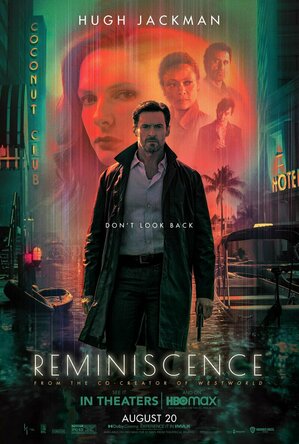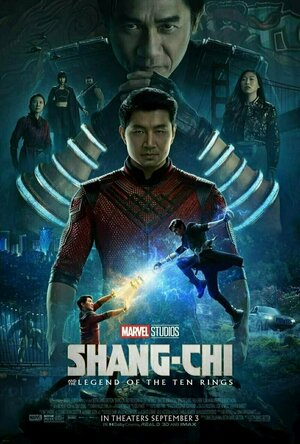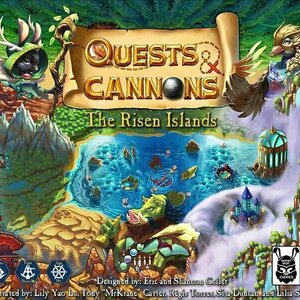
Breethe - Guided Meditation
Health & Fitness and Medical
App
De-stress & sleep better in only 10 min with your personal mindfulness coach! Breethe is the...

MM: #1 Millionaire Dating App
Dating, Entertainment and Social Networking
App
MillionaireMatch - the original millionaire dating app since 2001, over 3,000,000 users worldwide....
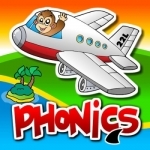
Kindergarten Phonics Island Adventure - Learn to Read Montessori Games with Puzzle Animal Train for Kids Hooked on Reading by Abby Monkey®
Games and Education
App
67% OFF SALE - TODAY: September 23-30, 2015 ***** Parents‘ Choice Awards’ winner *****...
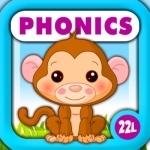
Phonics Island • Letter Sounds
Education and Games
App
***** Parents‘ Choice Awards winner ***** Developed by an award-winning education studios,...

Papa's Cupcakeria HD
Games
App
Bake and decorate delicious cupcakes through all of the fun holidays in Papa's Cupcakeria HD! --...
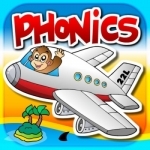
Phonics Island, Letter Sounds games & Alphabet Learning: Preschool Kids Reading
Education and Games
App
***** Parents‘ Choice Awards’ winner ***** Developed by an award-winning education studios,...
BankofMarquis (1832 KP) rated Reminiscence (2021) in Movies
Aug 24, 2021
Lisa Joy has written and directed her own “trippy, play with time” film, REMINISCENCE that has quite a few of the hallmarks of a Christopher (or Jonathan) Nolan film - but it also has one very unsettling aspect to it - it plays like a twice over copy of something else.
REMINISCENCE is a classic neo-noir with our hero being smitten by the femme fatale which draws him into her world, where murder, criminal activities and low-lifes run rampant all with a downbeat tone.
This sounds like a terrific premise for a Christopher Nolan film, unfortunately, in the hands of Lisa Joy, it is like watching a local community theater production of a Broadway musical.
The first 1/3 of this film is one long, laborious setup for the tragedy that will unfold and it is told at an uninteresting snail’s pace. Reminiscence picks up a bit in the middle with a pretty good action scene - and plot twist - before squandering this momentum with mediocrity at the end.
Joy’s script - which was on Hollywood’s infamous “blacklist’ of scripts for many, many years (a list of screenplays that are generally praised, but for some reason or another have not been produced), is at the core of the problem. The dialogue is not very interesting and dripping with heavy film noire clichés. She does not follow the Hollywood doctrine of “show, don’t tell”. She TELLS the audience much, much more than is needed and never really gives the audience any credit for figuring things out for themselves.
For example, there is a “dirty cop” that is central to the plot (there always is in this type of film). So, how do the other characters in the film address him? “You’re the dirty cop…”
I’d laugh if I wasn’t so bored.
What DOES work in this film is the acting of Hugh Jackman (as our hero), Rebecca Ferguson (as the femme fatale) and - especially - Thandie Newton as the “Gal Friday” of Jackman’s. Someone needs to give this talented actress a true showcase of her talents.
Someone also needs to give good ol’ Cliff Curtis a vehicle for his talents - he is one of the most misused good performers in Hollywood and he is misused in this film as well.
And…don’t get me started on the special effects. If you are going to make a trippy, sci-fi, futuristic neo-noire thriller, you probably shouldn’t cut the corner on the special effects, but this film does that, amazingly.
But…with a good Director at the helm there is enough “good enough” here (especially in the acting) that you should be able to pull something decent out of it.
But…Joy is making her theatrical film directing debut - exactly the type of director that this film does not need. What this film needed wasn’t a rookie director like Joy, it needed a Nolan - either Jonathan or (preferably) Christopher to make this work. But, one will have to be contented with a copy of a copy.
And that’s just not good enough.
Letter Grade: C+ (the performances of the leads almost salvage things.
5 stars (out of 10) - and you can take that to the Bank(ofMarquis)
Bob Mann (459 KP) rated Shang-Chi and the Legend of the Ten Rings (2021) in Movies
Sep 16, 2021
- This is Marvel at its best. A script (with Shakespearean undertones) that melds action with good character development and laugh-out-loud feel-good dialogue. The great thing is that you don't need to be a Marvel nerd to enjoy this one. Yes, there are some fabulous Easter Eggs for Marvel fans (and a wonderful return of a character from one of the early films). But it's almost a standalone feature in its own right.
- The action sequences are top-notch, particularly an early fight on a careering San Francisco "bendy-bus". Some great martial-arts reminiscent of "Crouching Tiger, Hidden Dragon", made more exciting by the fact that the impressive Simu Liu did all his own stunts.
- The relationship built between Shaun and Katy is wonderful, and the actors deliver on it brilliantly: no wonder when you have the exceptional Awkwafina on the other end of it. Similarly, the relationship built between Shang-Chi and his father is powerful, thanks to some wonderful acting from Tony Chiu-Wai Leung. So good in the gripping (and erotic) 'Lust, Caution', I believe this is his first English-speaking film.
- With the odd exception (see below), the special effects are top-notch.
Negatives:
- I thought this was 5* all the way until the final reel, when we descended into a CGI-driven "Godzilla vs Kong" finale. I hate CGI that's just a blur of action across the screen where you're struggling to understand what's going on. Less would be more here for me.
- The movie makes extensive use of 'flashbacks' and, for me, there was a bit too much heavy-handedness in their use. I muttered "enough already" to a few of them, since they were taking us out of the movie's current narrative.
- There were a couple of effects that looked like the intern at the special effects company had put them together during a coffee break. An early plunge of a jeep into a forest and some rather obvious green-screen stuff in the finale. Surprised that these weren't caught and redone.
Timeline?: So, it took more of a Marvel nerd than I am (my wonderful daughter-in-law Bronwyn) to point out that although this film is set (largely) in the "Present Day", the events of "Avengers: Endgame" actually happen in 2023. So in the Marvel timeline, this is set in between Thanos's "blip" and "the return". This is the reason why Wong is present but not Doctor Strange, for example.
Summary Thoughts: Marvel goes East! This is a really entertaining addition to the franchise, mixing Marvel action with Eastern mysticism and martial arts. It's an impressive job by director and co-writer Destin Daniel Cretton, in only his second feature (he did "Just Mercy" in 2019).
As a Marvel film, there are of course end-credit scenes ("monkeys" in onemannsmovies speak). A mid-title one is the best, bringing some additional Marvel characters into the mix. And there's a post-credits one which sets up for further sequels but which I found rather irritating.
It's ironic that a Marvel movie so right for the Chinese market - the first to be headlined by an Asian actor and with substantial Mandarin dialogue - might not get a release in China. According to this report, this appears to be for two reasons: firstly that the actor Simu Liu made some derogatory remarks about China in the past, and secondly that in the comics Shang Chi's father is Fu Manchu - a Western-derived character with racial overtones.
This doesn't seem to have hurt it so far. After less than two weeks of opening, it has made $262 million on a budget estimated to be $150-200 million.
(For the full graphical review and video check out #onemannsmovies on the web, Facebook and Tiktok. Thanks).
Kirk Bage (1775 KP) rated Midsommar (2019) in Movies
Jan 22, 2021
So, when I saw the trailer for Midsommar in 2019 and realised it was the same director, it went straight to the top of my must see list. Add to the appeal the significant lure of the lead actress and main character, the extremely promising Florence Pugh, who blew me away for her raw ability in Lady Macbeth, and beguiled me even more in every minute of Chan-Wook Park’s superlative espionage mini-series The Little Drummer Girl, and I knew this was something I didn’t want to miss. Sometimes it only takes two projects on a CV to elevate a future star from obscurity to A-list potential. In Pugh I had already seen enough range, charisma and depth to suspect she was one of those special few. By the end of Midsommar I was convinced of it!
Plot wise, all you need to know going in cold is that Dani (Pugh) racked with grief following early scenes is dragged to Sweden to participate in the Midsommar celebrations of a small isolated community, as her relationship with boyfriend Christian is very much on the rocks and she is in need of some catharsis and release. At first the Idyllic setting, bathed in sunlight you can almost feel, seems refreshing and clean. The whites, yellows and blues of the images are so crisp you can imagine every smell and texture, and you find yourself smiling, despite the fact a creeping unease and sinister secret is already infiltrating the calm in wonderfully subtle ways.
Needless to say it goes to some very dark and strange places. So much so I gasped out loud twice and stood up from my seat involuntarily on one particularly disturbing moment. To try and explain how that unfolds and comes to be is both impossible and would need some big time spoilers, so I won’t do that. It’s enough to say that where you are emotionally at the end of this filmic experience is very, very far from where you started. Much in the same way as Hereditary, you feel you have been dragged by the hair on a very uncomfortable journey that is both strangely unsatisfying, confusing and upsetting; you can’t say you “liked” either film as much as admitting you can’t stop thinking about them and need to see them again to absorb the detail, if indeed you can bear that.
As of writing this I haven’t gone back and watched this again – I’m genuinely wary of putting myself through it a second time! But, I have gone back to Hereditary and appreciated it much more knowing the ending already, and seeing the detail that is there from the beginning, that makes it all make sense in a way it doesn’t first time around. Midsommar, I sense, is the same, in that there has been so much attention to the build up and background that you will see and hear relevant clues to the mystery much more the more times you watch it. What they are wearing, images on walls and seemingly insignificant things the camera picks up on create a tapestry of loose threads that can be woven together into deeper meaning if that is what you want to do.
Without doing that it may seem like a bewildering entity, deliberately odd for the sake of it, and as such it could put anyone off. At 2 hours and 28 minutes it is a bit of a stretch, and the last half hour, once it descends into the complete madness suggested earlier, perhaps doesn’t live up to the promises it makes. Also, despite Pugh being a mesmeric presence from start to finish, the supporting cast can’t quite go with her on the same level. Even the talented Will Poulter seems burdened by a less than three dimensional character, underwritten as are many in a script that focuses so much on Dani that everything else suffers.
My overall impression of it as a film is that it falls short of greatness by a narrow margin, but comes very close at times to genuine genius. It is the promise of Aster as a filmmaker that excites me most, even if this is not the film it could have been with a little more experience, maturity and, perhaps, budget. It is his Bottle Rocket, or Hard Eight, when you suspect he will have a Grand Budapest Hotel, or a There Will Be Blood in him at some point down the line.
In conclusion, I can’t emphasise enough how much I was drawn to every moment of what Florence Pugh was doing. Be wary of the film if a casual viewing experience is what you want, because it may infuriate you, and compel you even to switch it off, if you are not totally ready to meet it where it wants to take you. But, watch it for Pugh and see what a rare talent she is bringing to cinema into the 2020s. A very exciting prospect indeed.
Purple Phoenix Games (2266 KP) rated Quests & Cannons in Tabletop Games
May 17, 2021
Quests & Cannons is a giant melting pot of mechanics rolled up into a cute little package with an interesting modular board with multiple setup options. In it, players take control of one of the aforementioned animal races and board their ships to claim islands and exploit their resources. The first player to amass 15 or 20 prosperity (VP) by the end of the game will reign victorious!
DISCLAIMER: We were provided a prototype copy of this game for the purposes of this review. These are preview copy components, and I do not know for sure if the final components will be any different from these shown. Also, it is not my intention to detail every rule in the game, as there are just too many. You are invited to download the rulebook, back the game through the Kickstarter campaign, or through any retailers stocking it after fulfillment. -T
There are so many steps to setup, and about a thousand bits and pieces, so I will save both your eyes and my fingers explaining. However, once setup, it should look somewhat similar to the photo below. Each player receives their own upgradeable ship board to track resources, action points, and other game-necessary components, along with a specific character and matching boat token.
On a turn, players will have three action points they may spend in any order on the following actions: Movement, Gather, Attack. Movement is one nautical hex in any direction per action point used, unless a player uses one of their sails. Sails add one hex to a movement and is spent for the rest of the round. The thing to keep in mind with movement is that different tiles affect movement in different ways, so luckily reference cards are included in the game. Once a ship discovers a new island, the player receives one coin and a Quest card in addition to flipping over the question mark Island Feature Tokens. These tokens show specific resources, which Quest cards require to be completed, at specific locations on the board.
Players can spend an action point to Gather resources from an island. Players are able to fill up their ships’ holds with as much of the resource as they wish, and it can be replaced with other resources on future turns.
Map Clues are cards that can be worked on during play, similar to Quest cards, and usually require an action point to be spent. These are special circumstances, and the action points are not available to be spent on every turn. Similar special circumstances include visits to Outposts, Trading Posts, and Starting Spaces. These spaces allow players to buy and sell items, and upgrade and repair ships.
The last option for action point spending is by attacking. A player may Attack another player when they share the same space on the board. The attacking player spends an action point to fire their cannons equipped on their ship. The ammo is tracked and represented by ammo dice. Once rolled, the attacker scores hull damage for every four pips rolled. If the ship takes as many or more hull damage than they have HP hearts, their ship sinks. Fortunately, this does not eliminate the player, but they lose many resources and coins, and will need to respawn at their starting location.
The player who earns 15 or 20 prosperity (depending on game mode) from attacking players, completing Quest and Map Clue cards, and possibly some other secret methods, will win Quests & Cannons and leads their race to eternal glory!
Components. Again, this is a prototype copy of the game, but I’ll tell you what, if the finished project comes with even slightly better components, it will be a monumental accomplishment. This is one of the highest-quality home-made prototypes I have ever received. I know most art and many items are final, but everything is on the table for upgrades, with a successful Kickstarter campaign. The colors are great, the art is fantastical and amazing, and it looks phenomenal on the table. I really enjoy the different characters with their unique special powers, and the double-layer ship player mats. Everything has its place and is organized beautifully. I am very excited to see the final product that Short Hop Games achieves!
This kind of game is really right up my alley: head-to-head combat (without player elimination), exploration, and pick-up-and-deliver. The only thing this is missing to be the perfect Travis game is a deck building element, but that certainly wouldn’t fit here. Quests & Cannons is chocked full of mechanics that, I believe, work really well together to provide a great game experience without adding a ton of complexity. The hexploration is strong, and the pick-up-and-deliver mechanic is tasty. All the mechanics, components, and artwork synergize so well that I am surprised this is a title from first-time designers and publisher.
What I like most is that though the rules are plentiful, once you get them down you have a wonderfully fun versatile game that can be played with many different group permutations and modes. The variety in setup options are endless, and the rulebook offers nine or ten different setups. The game also comes with lots of extra map bits, so any player could dream up several unique setup options at any time. The Quests are great, and the Loot cards (though I didn’t mention them in the overview) offer lots of ways to improve players’ strategies. With the abundance of upgrades available and unique special powers, this one is a big winner for me.
If you are in the market for something a little different, with a great theme and interesting combination of mechanics, then Quests & Cannons is certainly worth a look. I am very excited to follow the progress and the campaign for this one. I think backers will be receiving an incredible game with excellent components and tons of replayability. Now to challenge my wife so she can mop the poop deck with me.
